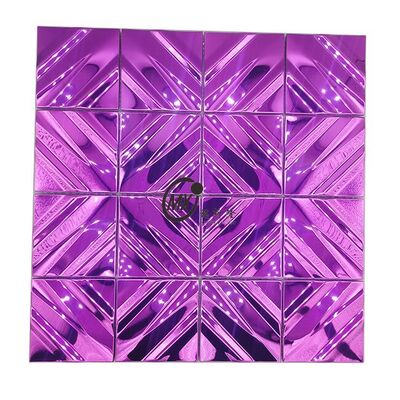Horizontal PVD Vacuum Titanium Coating Furnace
In the field of decorative coatings, Physical Vapor Deposition (PVD) has emerged as a transformative technology that offers a winning combination of visual appeal and robustness. PVD coatings have revolutionized the way decorative finishes are applied to various products, ranging from jewelry and watches to high-end faucets and architectural hardware. This in-depth article aims to provide valuable insight to professionals working in the decorative coatings industry by exploring the top PVD coatings and their applications.
Understanding Physical Vapor Deposition (PVD)
PVD is a highly advanced vacuum deposition process that involves vaporizing solid materials into a gaseous state and depositing them as thin coatings onto a substrate. The process is conducted in a controlled environment, ensuring precise and uniform coating thickness. The most common PVD methods for decorative finishes include Sputtering, Evaporation and Cathodic Arc Deposition.
Top PVD Coatings for Decorative Finishes
Titanium Nitride (TiN)
TiN coatings are prominently acknowledged for being a top selection in decorative coatings because of their attractive gold color. Beyond their aesthetic enhancement, TiN coatings offer remarkable attributes such as high hardness, resistance to wear, and effective protection against corrosion. These features make TiN coatings a practical choice for products where both visual appeal and durability are important considerations.
Zirconium Nitride (ZrN)
ZrN coatings provide a gold-colored finish similar to TiN, but with potential slight variations in shade. These coatings are commonly used when a decorative gold appearance is sought after, finding popularity in applications where a visually appealing golden hue is desired for the end product’s design.
Titanium Carbonitride (TiCN)
TiCN coatings display a wide range of colors, including rose gold and bluish silver, making them flexible for decorative uses. Rose gold adds elegance to items like jewelry, while bluish silver suits modern gadgets and minimalistic designs. TiCN coating color options enable designers to adjust for different preferences and enhance products visually.
Zirconium Carbonitride (ZrCN)
ZrCn coatings can display a variety of colors, such as gold, bronze, or black, depending on factors like process settings and carbon content. These coatings not only look good, but also offer exceptional durability, resistance to scratches, and protection against corrosion. This means the coatings retain their attractive appearance even with regular use. ZrCN coatings are widely used to achieve different colors, making them a practical choice for enhancing both aesthetics and longevity in various products.
Chromium Nitride (CrN)
CrN coatings offer a silver-gray appearance, resembling polished stainless steel. These coatings are frequently utilized in applications where a metallic appearance is desirable for decorative purposes. CrN coatings are found in automotive accessories, architectural hardware, and premium kitchenware, due to their capacity to impart an elegant metallic finish to the end products.
Titanium Aluminum Nitride (TiAlN)
TiAlN coatings provide a versatile range of colors, including gold, bronze, and black, depending on the aluminum content. TiAlN coatings combine striking aesthetics with exceptional hardness.

Nano Anti-fingerprint Coating Line

Stainless steel surfaces are prized for their sleek appearance and robust properties, making them a popular choice across a wide range of industries. However, the susceptibility of stainless steel to fingerprints and smudges has long been a concern. To address this challenge, the application of nano anti-fingerprint coatings has emerged as an innovative solution, offering enhanced functionality and a lasting pristine finish.
Nano anti-fingerprint coatings are engineered at the molecular level to create a surface that repels oils and prevents the adherence of fingerprints, thus maintaining the cleanliness and aesthetic appeal of stainless steel surfaces. The application of these coatings involves a meticulous process, often beginning with surface preparation to ensure optimal adhesion and uniform coverage.
The spraying of nano anti-fingerprint coatings on stainless steel surfaces is a critical step in the overall application process. This method offers several advantages, including precise control over coating thickness, a uniform distribution of nanoparticles, and the ability to cover complex geometries effectively. Additionally, spraying provides versatility in application, making it suitable for both small and large-scale surface areas.
The process involves the use of specialized spraying equipment designed to disperse the nano coating material evenly across the stainless steel surface. This equipment may utilize techniques such as airless spraying or electrostatic spraying to achieve the desired coverage and adhesion. The selection of spraying parameters, including pressure, temperature, and nozzle configuration, is crucial in optimizing the application process and ensuring consistent coating performance.
Furthermore, the composition of the nano anti-fingerprint coating solution plays a pivotal role in the success of the spraying process. Formulated with proprietary nano-scale particles, the coating material is engineered to create a microscopically rough surface, which minimizes contact area with oils and residues, thereby reducing their adhesion and visibility.
Beyond the application phase, the curing and post-treatment of sprayed nano coatings on stainless steel surfaces are integral to achieving the desired performance characteristics. Curing processes, such as heat treatment or UV irradiation, accelerate the cross-linking of the coating material, enhancing its durability, hardness, and resistance to wear and environmental factors.
In conclusion, the spraying of nano anti-fingerprint coatings on stainless steel surfaces represents a critical advancement in surface engineering and functional aesthetics. Through meticulous application, precise control, and specialized formulation, these coatings offer a transformative solution to the longstanding challenge of maintaining clean and pristine stainless steel surfaces across diverse applications.

 Your message must be between 20-3,000 characters!
Your message must be between 20-3,000 characters! Please check your E-mail!
Please check your E-mail!  Your message must be between 20-3,000 characters!
Your message must be between 20-3,000 characters! Please check your E-mail!
Please check your E-mail! 





